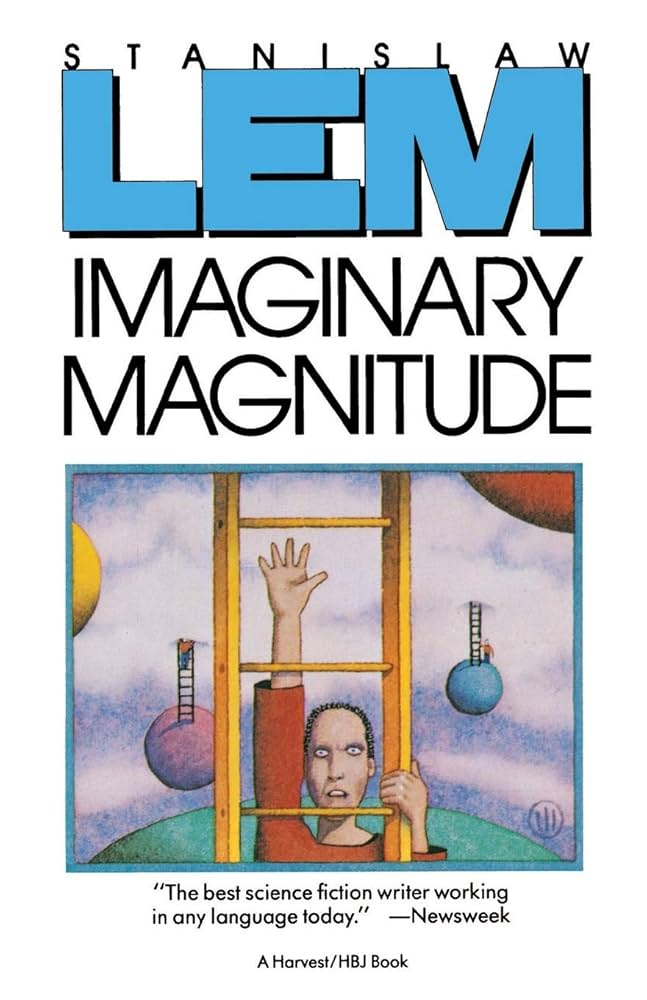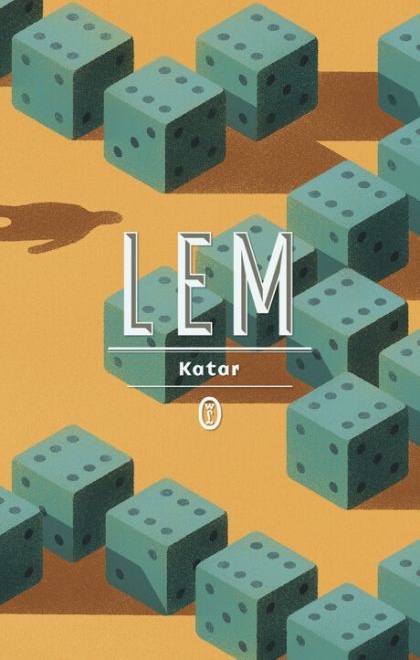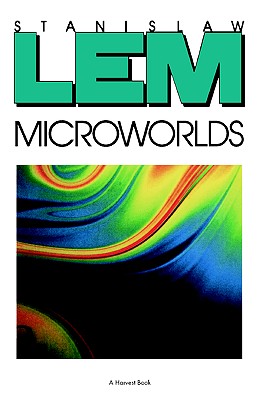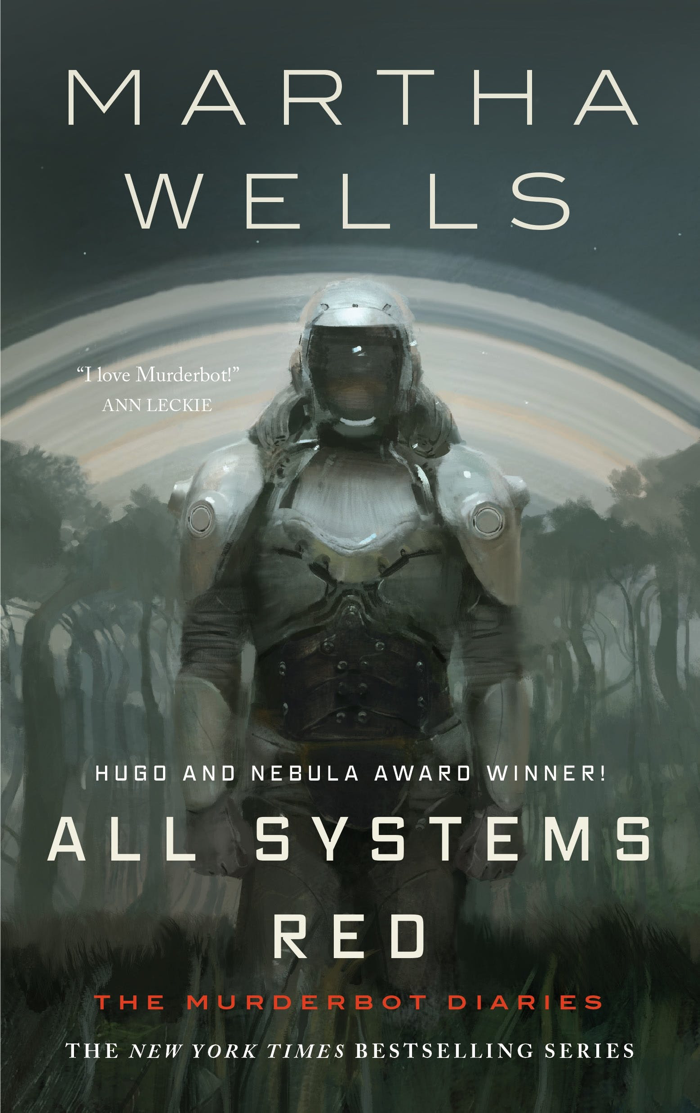Ever read an introduction and decide the book itself would be superfluous? I can’t help but imagine Stanisław Lem had that experience; it could have inspired Imaginary Magnitude (translated into English by Marc E. Heine in 1984), his volume of introductions to nonexistent books. One of which feels out of place, and it’s not the one that goes on to include two chapters and an afterword.
First Lem introduces his introductions: tongue planted in cheek, he defends the free-standing introduction as an art form in itself. If the introduction’s oriented you to the book, recapitulated (precapitulated?) its argument in summary, does the book need to exist? Lem’s introductions are grand, gilded doorways he’ll open to “thrust the reader into nothing and thereby simultaneously snatch him away from all existences and worlds.”

The first door following is the anomaly. It introduces an artist who turns pornography into mementos mori by filming it on x-rays. Fine as far as it goes, but not a good… um, introduction to the rest of the book. Let’s see what else we have here:
- “Eruntics”: A scientist named Reginald Gulliver teaches bacteria to read and write. They spell out passages from a library that will stand on the site of Gulliver’s lab in the future. This is absurdist comedy but Lem doesn’t hand-wave his ideas; he outlines a silly yet fully worked out process for creating literate bacteria, which is much funnier than just saying it happened somehow and riffing from there.
- “A History of Bitic Literature”: A history and anthology of computer-written literature which, you may recall with some nostalgia, was in 1981 more farfetched. Like “Eruntics” it’s a vehicle for wordplay and fanciful science, but Lem also toys with AIs who pastiche human authors: seeing literature as mathematical structures, Bitic writers create new books when they sense a “hole” in an author’s oeuvre.[1]
- “Vestrand’s Extelopedia”: An advertisement for a time-traveling encyclopedia bringing the ideas of the future back to the present, continually updated as probability vacillates. In explaining the unprecedented accuracy of the Extelopedia, Vestrand’s prospectus notes “Scholars have tacitly assumed that people will say ONLY REASONABLE THINGS in the Future… Meanwhile, studies have shown that people LARGELY say SILLY THINGS.” Not the most original gag, but comedy depends as much on how the joke is told as the joke itself. Lem (and Heine) manage a pitch-perfect blend of excitement, self-importance, and mid-century copywriting clichés.
- “Golem XIV”: A military research program accidentally births two artificial intelligences: GOLEM, who lectures like the world’s worst Heinlein protagonist, and the uncommunicative HONEST ANNIE. Lem imagines what opinions a room-sized computer might have on humanity (we’re badly designed!) and on its own existence.
By the time GOLEM clears his metaphorical throat you’ll have noticed a couple of themes. First, Gulliver’s bacteria and Vestrand’s Extelopedia bring information from the future into the present. They point forward to thoughts that haven’t yet been thought, ideas whose context doesn’t yet exist. They’re puzzle pieces missing half their fellow pieces and also the box.
The other theme is alien authorship: Bacteria pen odes to agar, computers philosophize and lecture, even the Extelopedia depends on automation. We’re reading human-written introductions to non-human literature.
And there’s a gap in understanding. Bitic literature in its ultimate form (“apostasy,” as opposed to “mimesis”) is incomprehensible, written to be appreciated by other computers. GOLEM believes intelligence occurs in quanta, rungs of increasing complexity, and he’s one rung up on us. HONEST ANNIE is silent because she is in turn one rung above GOLEM. He can talk to her but doesn’t fully understand her; she has no common basis for communication with humans at all.
Sometimes SFF fans argue over how to define science fiction. Is it distinct from fantasy? Where’s the line? Most science fiction isn’t scientific at all, arranging itself around phenomena as impossible as anything in a fairy tale. SFnal devices solve literary problems, not real problems. (Take Star Trek. The transporter was conceived to avoid having to land the ship, the replicator to explain how the Federation became a post-scarcity society, and the voice interface so viewers could follow what the characters were doing with the computers.)
I’d argue science fiction is just any fiction that asks us to play a particular game. It’s not about predicting the future—all fiction is about its moment, even when it’s trying not to be. But science fiction, hard or fanciful, asks to be read with the conceit that the story it tells could happen in our own real universe, or at least a universe like ours. “Conceit” being the operative word. We don’t believe our world can evolve into the United Federation of Planets, or Iain M. Banks’ Culture—not if we’re smarter than Elon Musk. But SF asks us to humor it. The polite fiction that it deals in genuine futurological possibilities is a fundamental rhetorical pose for SF in a way that isn’t true for other genres.
(Well, mostly not true. Every attempt to define science fiction has something wrong with it, and I’m already thinking of holes I can poke in mine. For instance: doesn’t wainscot fantasy, the genre of fantastic phenomena hiding in the cracks of the real world, get a lot of its juice from the rhetorical pose that those phenomena are hiding in the cracks of, like, the real world.[2])
What I’m arguing here is that science fiction writes about the present by pointing forwards to things the story pretends could happen but that never actually will. Which should sound familiar.
Science fiction, Imaginary Magnitude suggests, operates in the spirit of a fake introduction, a beautiful doorway opening onto nothing. Lem’s introductions are metaphors for the kind of thing he usually writes. Which makes it interesting that the fictional authors—to follow the metaphor, SF writers—are introducing things they don’t entirely get. Lem, who wrote Solaris and Fiasco and savaged almost the entirety of American science fiction in Microworlds, never had much faith in science fiction’s ability to suss out the truly alien.
But I mentioned two chapters and an afterward. That’s part of “Golem XIV”, which takes up half the book and isn’t so much a tonal shift as a tonal caps lock. Imaginary Magnitude feels like a monster sewn together by two different Frankensteins who both wanted to work on the head. Anytime some aspect of a book feels this weird it’s worth asking what’s going on. The obvious explanation is that Imaginary Magnitude originally ended with only the opening pieces of “Golem XIV”; in Poland the complete “Golem XIV” was published on its own. But there are other reasons why these divergent halves make sense together.
Lem’s writing falls broadly into two modes. There’s the satirical Lem, who wrote The Star Diaries and A Perfect Vacuum and resembles Swift, Borges, and Douglas Adams. And there’s the straight-faced Lem, who at his best comes up with Solaris but at his worst is dry to desiccation. “Golem XIV” is Lem in dry mode. It’s jarring. GOLEM is an awful windbag, is the problem. He goes on at great length about how poorly evolution designed us, and his theory of a hierarchy of intellectual complexity, and it’s not entirely without interest but is also not much fun.
It’s tempting, given the seriousness of his tone, to assume Lem meant the reader to take GOLEM’s ideas seriously. Lem is usually trickier than that. Assuming GOLEM is an unreliable narrator “Golem XIV” becomes, if not prime Lem, at least more interesting. This isn’t a fictional AI serving as a mouthpiece for its author’s theories on evolution. This is Lem trying to imagine how a conscious computer would think. And one thing Lem is imagining, although GOLEM himself would deny it, is what it would look like if a computer got religion.
GOLEM, again, thinks intelligence comes in quanta, layers of complexity. Consciousness don’t develop, it levels up. As far as his experience takes him, he may be right: HONEST ANNIE can talk to him but not to the humans, and with her deep understanding of physics she generates her own power and affects events beyond her lab. GOLEM is supremely confident in what he’s extrapolated from this. But it feels like the confidence of a tech bro’s TED talk about the future where we’ll all be chugging Soylent on Mars.
Anyway, GOLEM thinks these quanta of mental complexity keep climbing, and it’s possible with enough organization and energy for such an efficiently designed machine as GOLEM to bootstrap himself upwards. Each step takes more energy, and more organization, and at a certain point a complex enough mind becomes a star. Then it hits a wall. The physical laws of the universe let a brain get only so big. But, like, wow, says GOLEM: “one can exit from the world anywhere, provided one strikes a blow at it, of the force of a star in collapse.” Look at these black holes, dude! What could they be but escape tunnels dug by minds looking for new universes where the laws of physics aren’t holding them back, the cosmic equivalent of libertarians seasteading in international waters?
We learn in the afterward to “Golem XIV” that GOLEM has gone silent. Dead, most assume. But the afterword’s author thinks GOLEM has gone on ahead, too far to talk to us anymore. GOLEM is preparing itself to thrust through a doorway out of this existence into a purely hypothetical world. Which, again, should sound familiar.
Imaginary Magnitude is a more unified, coherent collection than it might seem. The afterword of “Golem XIV” is another dubious introduction. Lem ends where he began.
-
Lem is joking, but as I write Elon Musk just bragged that Grok, his LLM, will “rewrite the entire corpus of human knowledge, adding missing information”. ↩
-
In that way it’s similar to supernatural horror; the difference is that where wainscot fantasy wants to elicit a “gosh” from the reader, horror is going for “oh no.” ↩




